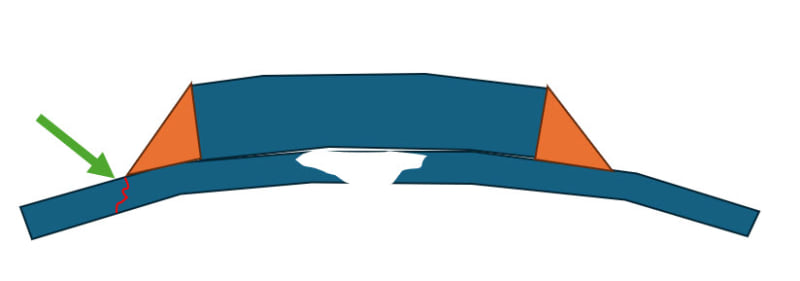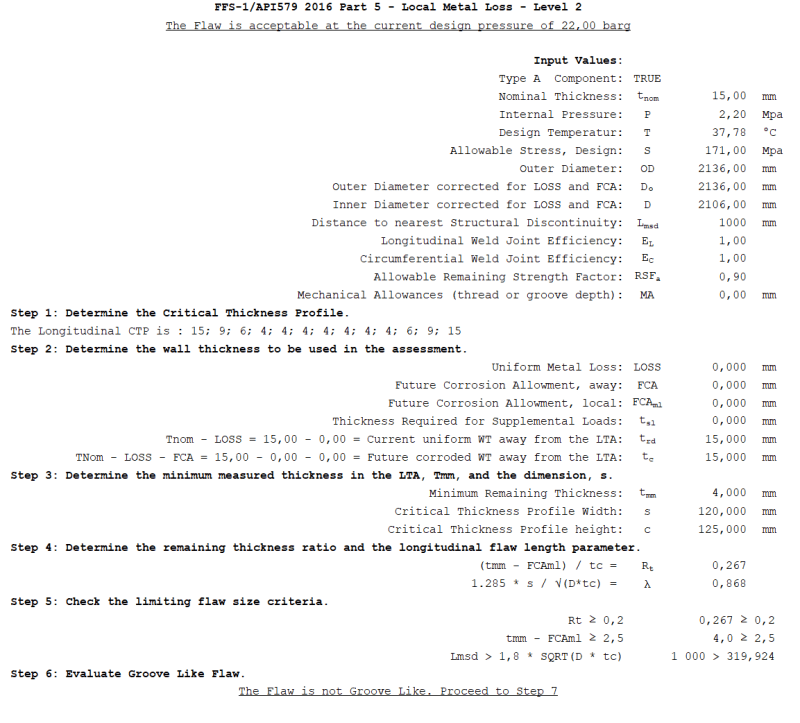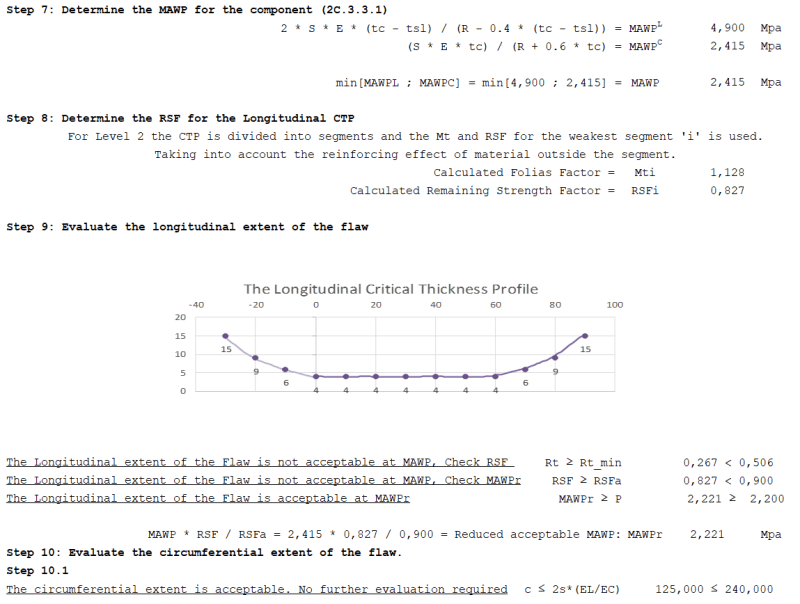Hello All,
I am currently looking into the design of a fillet welded patch as per PCC-2 Article 212 due to external corrosion (local thin area) on a pressure vessel (designed to 2.2 MPa @ 180 degC with SA-516 Gr.60 material equivalent). As the vessel is designed to PD 5500, the minimum thickness is 13.7 mm with a nominal of 15 mm.
I would like to get some advice on the interpretation on some of the items in PCC-2.
From Paragraph 212.3-4(c), the load eccentricity check requires a minimum thickness of 44 mm. However, it appears this approach does not take into account the remaining strength of the initial shell. Is there any actual references on how to take this into account ?
Looking at Article 207 for patches with plug welds, there are formulas to determine the allowable loads on the plug welds however, the article doesn't actually state how these plug welds take up the eccentric loads. As the perimeter welds will still be present, the bending due to the eccentric configuration would still take place. Is this correct?
I am currently looking into the design of a fillet welded patch as per PCC-2 Article 212 due to external corrosion (local thin area) on a pressure vessel (designed to 2.2 MPa @ 180 degC with SA-516 Gr.60 material equivalent). As the vessel is designed to PD 5500, the minimum thickness is 13.7 mm with a nominal of 15 mm.
I would like to get some advice on the interpretation on some of the items in PCC-2.
From Paragraph 212.3-4(c), the load eccentricity check requires a minimum thickness of 44 mm. However, it appears this approach does not take into account the remaining strength of the initial shell. Is there any actual references on how to take this into account ?
Looking at Article 207 for patches with plug welds, there are formulas to determine the allowable loads on the plug welds however, the article doesn't actually state how these plug welds take up the eccentric loads. As the perimeter welds will still be present, the bending due to the eccentric configuration would still take place. Is this correct?



